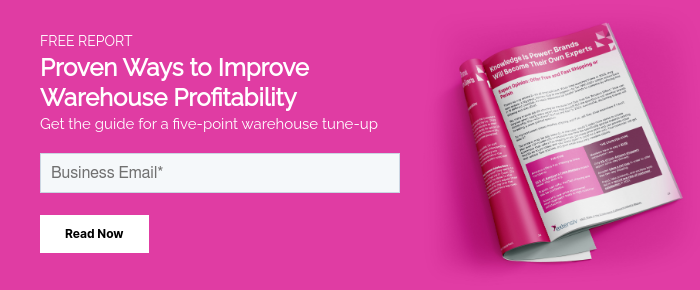With the holiday peak season coming to a close and the new year approaching, many 3PLs may find their businesses longing for a short reprieve from the rapid pace and constant demand. However, if this year was any indication of what we can expect next, many won’t have time to pause before tackling the new year.
For third-party logistics (3PL) warehouses, the transition from holiday peak season to the new year can come with little time to plan and plot out the goals, objectives, and strategies for the upcoming year. As with many businesses, 3PLs can benefit from performing a retrospective on previous performance and overlaying the findings with a business roadmap and growth strategy.
Complete a Warehouse Retrospective
Performing a retrospective of previous warehouse performance starts by looking at a critical time for the business (e.g., time of high-volume or another major event) and then asking some very basic questions:
- What went well? (Keep Doing)
This section will include things like order throughput records, time to productivity for new or temp labor, system benefits, positive customer feedback, etc.
- What went poorly? (Stop Doing)
This section may include things like customer losses, mis-picks or accuracy issues, increase in customer service contacts, system outages, labor shortages, etc.
- What do we need to improve? (Start Doing)
This may include things like better dock scheduling for receiving products, added integrations with shopping carts and marketplaces to reduce manual order entry, implementing better quality control processes, automating warehouse processes with a new warehouse management system (WMS) technology, creating better communication processes between support and warehouse, and expanding temporary labor agency relationships.
This analysis should include performance metrics, employee-run programs, communications, customer experiences, processes, and systems experiences from across the entire organization. Performing this retrospective as a team can provide great insight into where opportunities exist for the business in the coming year, as well as key areas for improvement or optimization.
Complete a Growth Analysis of Your 3PL
In 2021, 85% of 3PL warehouses grew their order volumes and 79% grew profitability, but those that had the highest growth (25%+) had very key hallmarks to their businesses across the verticals they serve, technology they implemented, and how they measure their business performance. With nearly 71% of 3PLs looking to acquire new customers in the coming year, annual planning will play a big role in the success of companies achieving their growth targets.
Start by asking and outlining key goals for your business, including target growth rate, number of new customers, order volumes, and profitability targets. This will provide a baseline that will feed into the roadmap for the coming year. You’ll need to identify any gaps you might have in supporting those objectives (e.g., technology, processes, people, etc.).
Once you have your targets, then you can think about scenarios and stretch goals. Questions to ask your team:
- Could your 3PL handle 20% order volume growth? 50%? 100%? What programs or technology would you need to implement to enable your warehouse(s) to scale without loss in performance?
- How will you improve revenue or profitability in the coming year? What specific strategies will you implement to achieve those key performance metrics?
- How will any increased volume impact your customer experience? Will you need to add more customer support or new warehouse management technology to provide better real-time inventory visibility to customers?
- Do you need to diversify your offerings in order to expand? What processes would you need to put in place to add new verticals or support omnichannel fulfillment?
- How much available space do you have in your warehouse(s)? Will that offer enough room to grow? Will you need to find new warehouse space or create partnerships with other warehouses in new locations to accommodate the growth?
- Does your area have enough available labor? Will you need to create programs to onboard new employees faster? Will you need to automate certain functions to reduce dependency on manual labor?
- What key performance indicators (KPIs) do you track today? What will you need to track in the future to view the changes in your performance and to drive continuous improvement?
- Do you offer sufficient shipping options for your customers? Will you need to expand shipping relationships to offer a broad array for your customers?
While you could ask many more questions to understand the changes needed for your business, these questions will provide a foundation for annual planning and aligning actions with your annual targets.
Easy Ways to Make Improvements
As we wrap up the year, evaluating processes could represent a good start. Check out these checklists to review with your business to drive efficiency and optimization:
- Warehouse Process Checklist
- Perfect Receiving Checklist
- Perfect Pick and Pack Checklist
- Warehouse Profitability Checklist
Success Benchmarks
Many companies saw tremendous success last year. Know where you stand versus your competitors and what you need to do to accomplish your future objectives will play a pivotal role in driving growth and profitability.
Learn more about the plans your competitors and other 3PL warehouses have for 2022 by reviewing the Third-Party Logistics Warehouse Benchmark Report.








